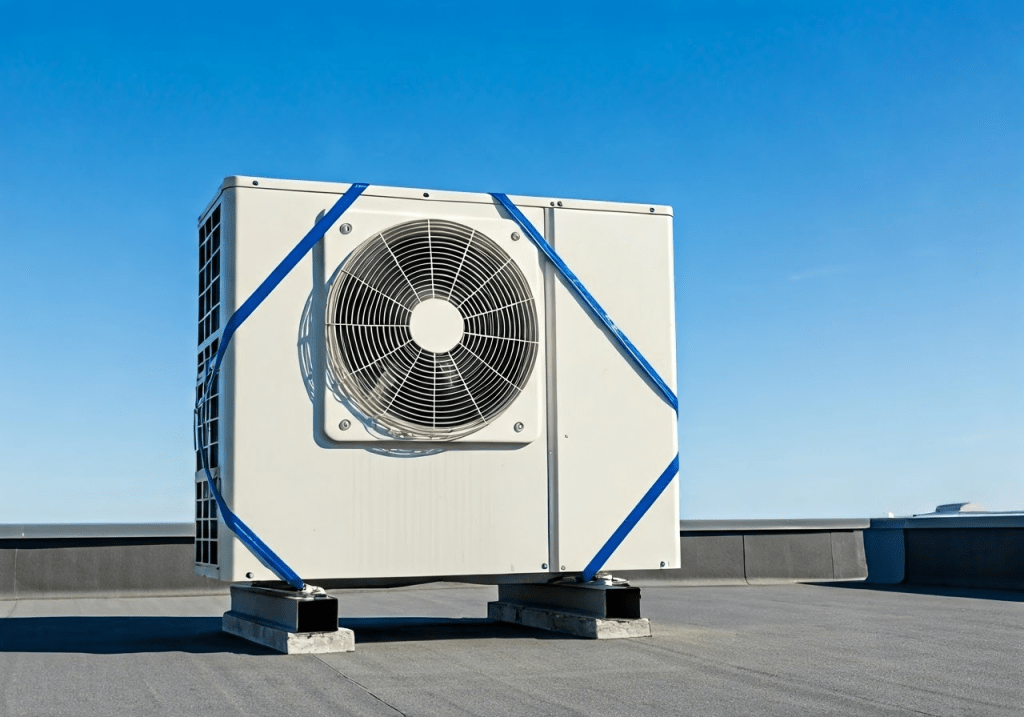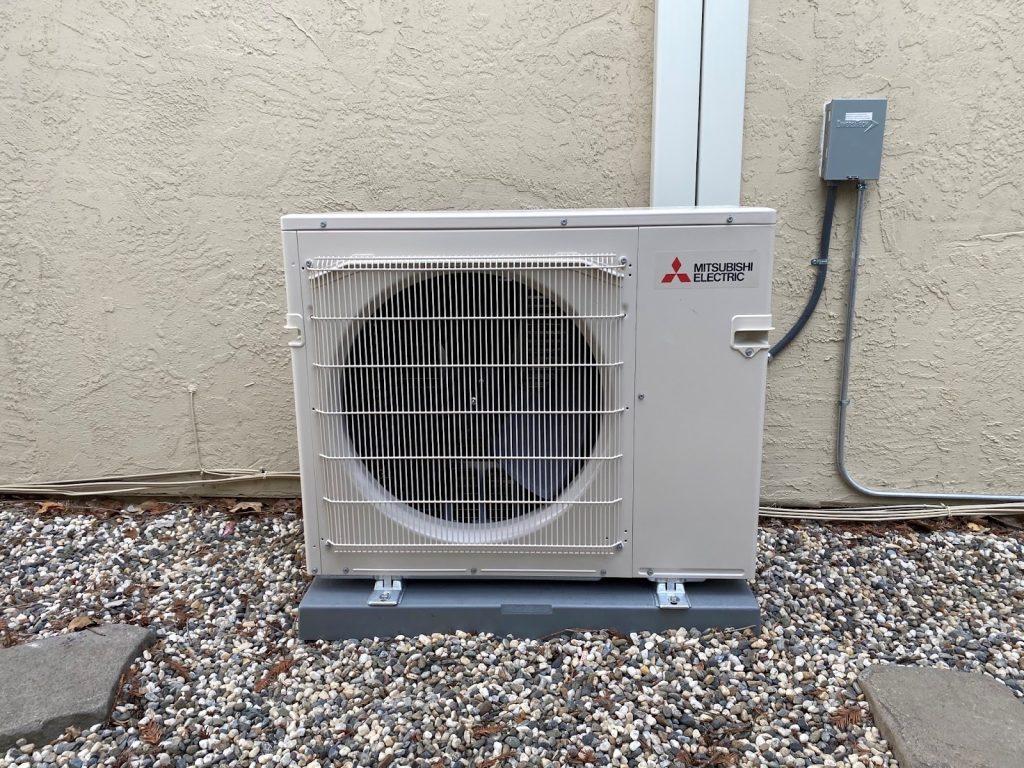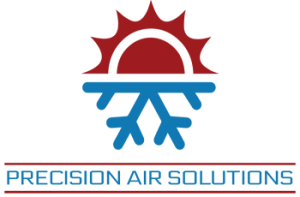Key Highlights
- Implementing earthquake proofing measures can significantly reduce these risks and ensure the safety and integrity of your HVAC system. HVAC systems are at most risk from earthquakes, which can lead to gas leaks, water damage, and electrical hazards.
- Outdoor units need to be secured, gas and refrigerant lines need to be run on flexible connectors, and ductwork should be properly braced.
- You need regular HVAC maintenance to identify and fix vulnerabilities before an earthquake makes things worse.
- If you live in an area that’s vulnerable to earthquakes, it’s important to check your HVAC system for damage after an earthquake, and consider earthquake proofing your system to prevent future issues.
- Have a qualified HVAC technician evaluate and, if necessary, fix your system.
___________________________________
Living in an area that can have earthquakes means you need to think about how these events can affect your home, especially your HVAC unit. Many people ignore this, but HVAC systems can get damaged during an earthquake. This can lead to expensive repairs and safety issues. Earthquake proofing your HVAC system can help mitigate these risks. In this guide, we take a look at the risks associated with earthquakes and HVAC units. It also provides you step-by-step instructions on how to protect your system should an earthquake occur, which provides you with peace of mind.
How do Earthquakes Affect HVAC Systems?

Let us now look at how some of HVAC parts can be affected by earthquakes and the importance of earthquake proofing. That will help us understand the effects on the whole.
Refrigerant lines transport refrigerant through connections between the indoor and outdoor units. These lines are very susceptible to vibrations. If they crack or break, this can cause the refrigerant to leak. This would prevent your air conditioning from properly cooling your house. There’s also the pollution to worry about. Implementing earthquake proofing measures can help reduce the risk of damage to these lines, ensuring your system remains efficient even during seismic events.
With vibration isolators, you can minimize the amount of seismic energy that reaches the unit. However, even those can be damaged or move out of place due to the vibrations, putting your system more at risk of damage from earthquakes. Implementing earthquake proofing measures can help mitigate these risks. Your electrical system is also at risk here. There could be short circuits or even fires.
Essential Earthquake Proofing Measures for Your HVAC System

The basic steps to earthquake proofing your HVAC system involve using some fundamental techniques to safeguard it at the time of an earthquake. Seismic bracing is one method. It means installing brackets, straps, and supports. These tools secure the HVAC unit to your home’s foundation. When an earthquake happens, earthquake proofing stops the unit from moving or falling over.
Implementing Seismic Bracing for Outdoor Units
Any portion of your HVAC system that isn’t indoors, such as a condenser or heat pump, can be moved around a lot in an earthquake. Seismic bracing is needed to keep these units safe. In this case, you’ll want to anchor the unit to a concrete pad or to the home’s foundation. This can be done using strong straps and brackets.
Also, brace the refrigerant lines and ductwork that connects with the outdoor unit. It helps to reduce stress and stops damages from vibrations. When you secure the parts well, you are lowering the chances of the unit tipping over or moving during an earthquake. Incorporating earthquake proofing measures ensures the safety and longevity of your HVAC system in seismic areas.
Benefits of Flexible Connections for Absorbing Vibrations
Seismic bracing helps hold the structure up. Using flexible connections for gas lines and refrigerant lines adds more safety by soaking up vibrations. Unlike stiff connections, flexible connections can move and stretch. This reduces the possibility of damage in an earthquake. Earthquake proofing your HVAC system with these flexible connectors ensures that it can better withstand seismic events.
The connectors are usually made of corrugated stainless steel or braided polymer, and are very flexible. They are flexible enough to handle seismic activity yet strong enough to endure the pressures and temperatures that HVAC systems endure. Using these connectors increases the strength of your HVAC system. This allows it to last longer and gives you peace of mind.
Regular Maintenance: The Key to Earthquake-Ready HVAC Systems

Checking your system over before an earthquake is a great idea. That way, your system will be ready for any seismic activity. This inspection should include:
- Inspecting all gas and refrigerant lines for leaks, cracks, or loose connections
- Examining the electrical system, wiring, connections and disconnects.
- Looking at the ductwork to make sure that it’s supported correctly, securely connected, and not damaged
- Ensuring that the unit is properly anchored, there is seismic bracing
- Checking the condensate drain line for clogs or possible leaks
Post-Earthquake HVAC Assessment
Whenever there’s been an earthquake, big or small, you need to make sure that your HVAC is working fine before continuing to use it. First, check to see if you notice any visible damage. Look for leaks, cracks, or parts that have moved out of place. If you do smell gas, leave and call the gas company right away. In situations like these, earthquake proofing your HVAC system can provide additional safety and peace of mind.
You should also schedule a professional inspection. This will guarantee that your system is secure and reveal any hidden damage. A qualified technician can check the earthquake resistance of the system, look for gas leaks, ensure electrical connections are good and not damaged, and can check to make sure all the parts of the HVAC system are working properly. Additionally, earthquake proofing can be a crucial step in protecting your system from potential seismic events. Quick fixes can help you avoid more damage, keep you safe, and get your heating and cooling system back on track with barely any downtime.
___________________________________
Keeping your HVAC system out of harm’s way when an earthquake hits is important for overall longevity and performance. Earthquake proofing your system can greatly reduce risks, using seismic bracing and flexible connections, plus regular maintenance to ensure all is in order.
Don’t leave your HVAC open to seismic threats. Depending on your needs, Precision Air Solutions has comprehensive earthquake preparedness solutions. Our team of experts will examine the system, suggest solutions, and guarantee that the system is robust.
Protect your investment with our help. Fortify your HVAC system against earthquakes. Contact Precision Air Solutions today.
Frequently Asked Questions
Why is earthquake proofing important for my HVAC system?
Earthquake proofing is crucial for protecting your HVAC system from damage caused by earthquakes. Vibrations and movement during an earthquake can lead to gas leaks, refrigerant line ruptures, electrical issues, and ductwork damage. By earthquake proofing your HVAC, you can reduce the risks of costly repairs and maintain system functionality after a seismic event.
How can I earthquake-proof my outdoor HVAC units?
To earthquake-proof your outdoor HVAC units, you can install seismic bracing, such as brackets, straps, and supports, to anchor the units to the foundation. This will prevent the units from moving or tipping over during an earthquake. Additionally, make sure the refrigerant lines and ductwork are properly braced to reduce stress and minimize potential damage.
What are flexible connectors, and how do they help with earthquake proofing?
Flexible connectors are vital for earthquake proofing HVAC systems. Made from materials like braided polymer or corrugated stainless steel, these connectors can absorb vibrations during an earthquake, reducing the risk of cracks or breaks in gas and refrigerant lines. They allow movement while maintaining strength, making them ideal for seismic activity.
Can earthquake proofing prevent damage to my HVAC system during an earthquake?
While earthquake proofing cannot eliminate all risks, it significantly reduces the chances of severe damage. By securing the HVAC unit, using flexible connections, and performing regular maintenance, you can help protect the system from common earthquake-related issues like gas leaks, broken refrigerant lines, and electrical damage.
How often should I maintain my earthquake-proofed HVAC system?
To ensure your HVAC system remains earthquake-ready, regular maintenance is essential. It’s recommended to inspect all gas and refrigerant lines, check the electrical system, verify that ductwork is properly braced, and ensure that seismic bracing is intact. A professional HVAC technician can help with these inspections to ensure everything is in working order.

